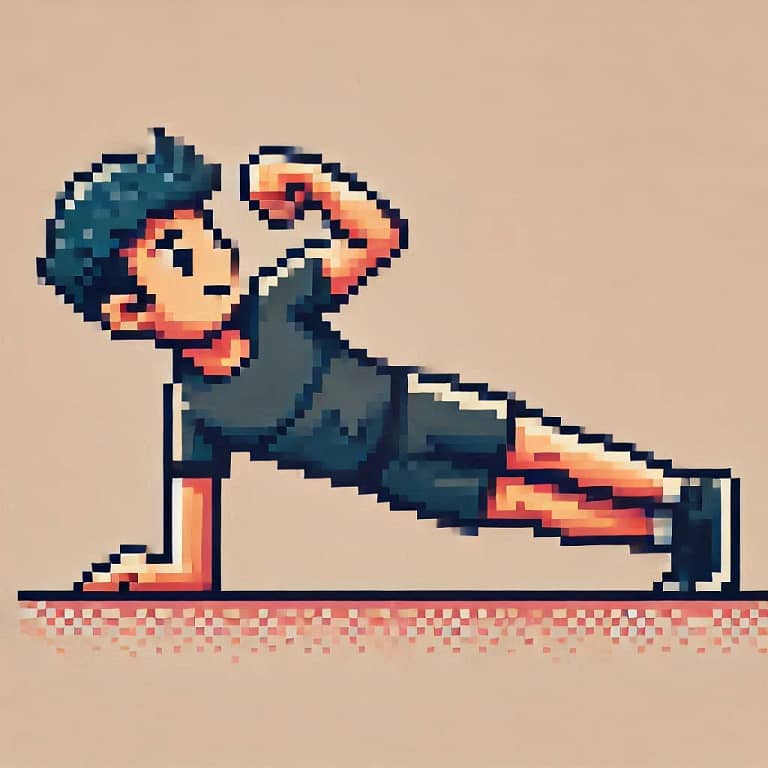Bigger Arms with NO Equipment
How to use the bench dip to get a bigger upper body
Want a body weight exercise that will blow up your arms and can be performed virtually anywhere? Enter the bench dip.
The bench dip is a bodyweight exercise that primarily targets the triceps but can also increase muscle mass in the chest and shoulders as well.
Below I’ll discuss the proper progressions to go from a complete beginner to master of the bench dips.
The Bench Dip
Objective:
- Tricep Muscle Stimulus
- Muscular (Toned) Arms
Materials:
- Bench, Chair or Stairs
Assessment:
- 25 Bodyweight Bench Dips (With Feet Elevated)
- 25 Resisted Bench Dips + 25 Bodyweight Bench Dips (With Feet Elevated)
Steps:
- Isometric Hold
- Feet on Floor
- Knees Bent
- Knees Straight
- Feet Elevated
- Added Resistance
The Bench Dip
The bench dip requires little to no equipment. You just need a bench or chair. You can even use a set of stairs. Just make sure that whatever you use is sturdy and isn’t going to slide on you when performing your dips.
Sit on the edge of the bench with your hands placed right next to the sides of your hips with palms down and fingers forward.
Extend your legs out in front of you and place your heels on the floor. Lower your body by bending your elbows to around a 90 degree angle, then push back up to the starting position. Don’t let your body drift forward and don’t go so deep that you experience shoulder pain. Focus on locking your elbows out at the top of the movement.
For an easier variation, bend your knees and keep your feet flat on the floor.
Isometric Hold
If you are not strong enough to perform the bench dip yet, start with an isometric hold of the start position. Don’t let your shoulders rise up. Instead, push your shoulder blades down towards the floor. Aim for 60 seconds.
Repetitions
Start to work your way down towards the floor with a slow progression. Give yourself pads or pillows to ensure a range of motion that you are comfortable with. Practice in sets of 3-5 reps. Slowly lower your pillows or pads to increase the range of motion.
When you can perform 5 sets of 5 with your upper arms parallel to the floor, you are ready to straighten your knees. When you can perform 5 sets of 5 reps in this manner, elevate your feet.
Elevate your Feet
To increase the resistance, elevate your feet up onto another chair, bench or body. You can even have a partner hold your feet. I like to keep a slight bend in my knees here to take a little stress off of the shoulders.
Work up to sets of 10 repetitions.
Add Resistance
When you are able to get 10 repetitions with your feet elevated, you can play around with adding resistance. It is most helpful to have a training partner place a weight plate in your lap after you are in position, but you can do this yourself if need be.
Perform your repetitions slowly and controlled especially when adding resistance to make sure there is no extra strain on your shoulders or wrists.
You can use as much weight as you feel comfortable with but I would advise against going above
Assessment
C grade: 25 body weight bench dips with feet on floor and knees straight.
Repetitions must be controlled and every rep must be taken to 90 degrees of elbow flexion.
B grade: 25 body weight bench dips with feet elevated to 12-20 inches off ground.
If you can perform 25 bodyweight bench dips you are no slouch.
A+: For advanced lifters that want an A, 25 reps with a 25lb plate (10lb for females) followed immediately by 25 body weight repetitions.
Are you up for the challenge?
Try to get 25 repetitions with a resistance plate on your lap, followed immediately by another set of 25 bodyweight bench dips for a total of 50. Rest as little as possible between the two sets of 25. Your triceps will feel a pump and will burn. When you can complete this challenge, you can consider yourself a bench dip master!
Training Checklist







